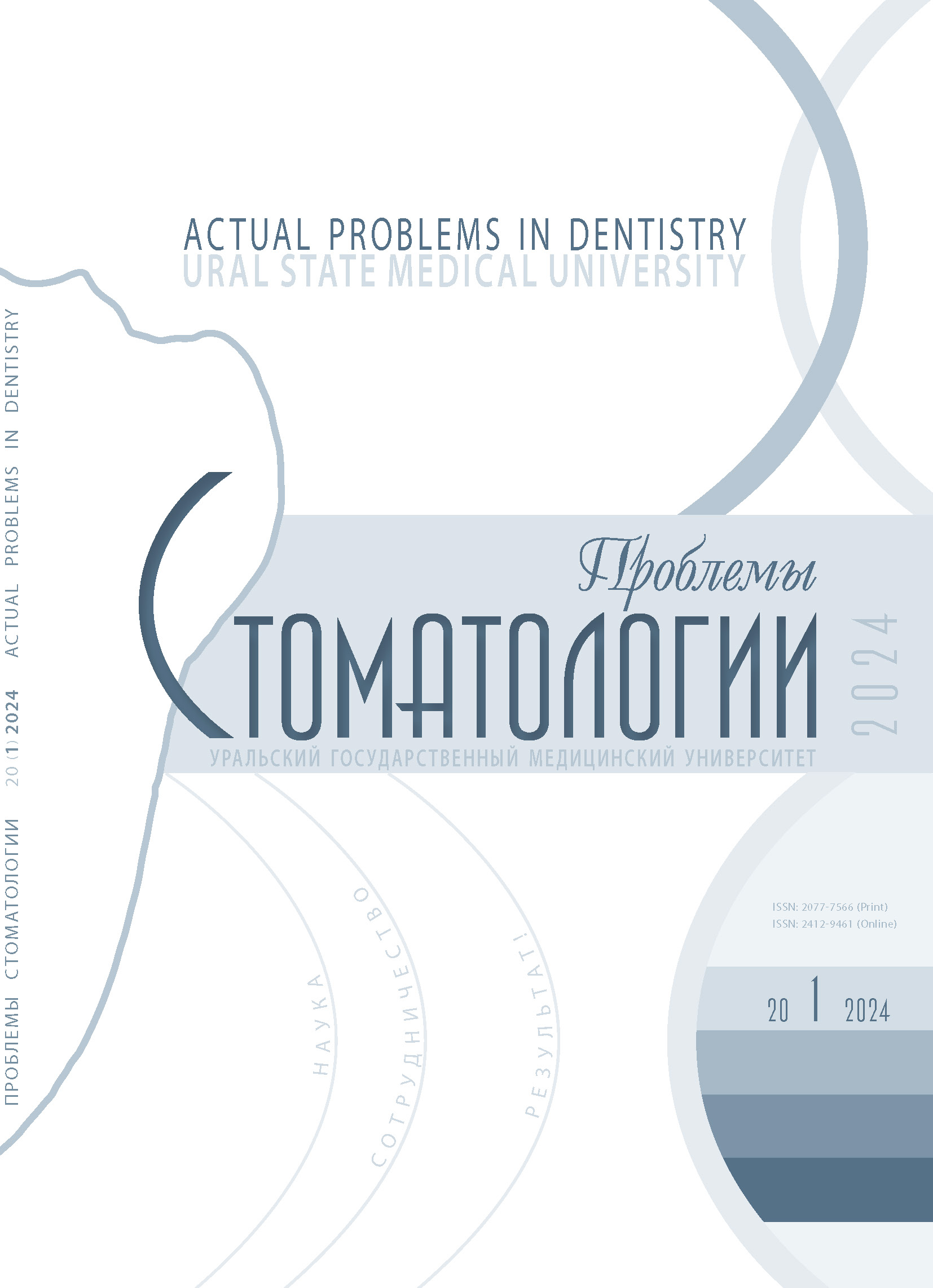Kazan, Kazan, Russian Federation
Moscow, Moscow, Russian Federation
Kazan, Kazan, Russian Federation
employee
Cheboksary, Cheboksary, Russian Federation
Kazan, Kazan, Russian Federation
UDC 616.31
Relevance. Improving the diagnosis and provision of periodontal care to patients with chronic periodontitis in combination with herpetic and candidal lesions is an urgent goal of many modern studies. The COVID-19 pandemic, and the post-COVID syndrome, have sufficiently changed the view of dentists on the diagnosis and treatment of these comorbid and associative diseases. Purpose: comparison of the Shannon biodiversity index of the studied groups. Materials and methods. We conducted a single-center, randomized, prospective, clinical-microbiological, controlled, open study to determine the comorbidity of herpes and candida infections with chronic generalized periodontitis; 61 patients (aged 18 to 19 years) were examined. Results: In general, I would like to emphasize that the less we record the Shannon biodiversity index, the healthier the space under study, in our case the periodontal area, is. Since less biodiversity is a formed stable microbial community, contributing to the preservation of constancy and protection from opportunistic and pathogenic forms. In conclusion, I would like to note that the pathogenesis of COVID-19 is truly interesting and unique, and there is practically no data on changes in the spectrum of periodontopathogenic and normal microbiota in the pathology under consideration, therefore the use of metagenomic analysis of the oral microbiome against the background of a coronavirus infection will expand the understanding of the course of these comorbid diseases. Therapeutic measures aimed at reducing the viral load in periodontal tissues can help not only reduce the number of possible niches for the life of the virus, but also strengthen periodontal tissues, preventing the development of comorbid and associative forms of diseases.
periodontitis, COVID-19, stomatitis herpetiformis, candida infection, biodiversity
1. Haahtela T.A biodiversity hypothesis // Allergy. – 2019;74(8):1445-1456. doi:https://doi.org/10.1111/all.13763.
2. Gao L., Xu T., Huang G., Jiang S., Gu Y., Chen F. Oral microbiomes: more and more importance in oral cavity and whole body // Protein Cell. – 2018;9(5):488-500. doi:https://doi.org/10.1007/s13238-018-0548-1.
3. Zhang Y., Wang X., Li H., Ni C., Du Z., Yan F. Human oral microbiota and its modulation for oral health // Biomed Pharmacother. – 2018;99:883-893. doi:https://doi.org/10.1016/j.biopha.2018.01.146.
4. Pla L. Bioraznoobrazie: vyvod na osnove indeksa Shennona i bogatstva. Interscience. 2006;31(8):583-590. [L. Pla. Biodiversity: inference from Shannon index and richness. Interscience. 2006;31(8):583-590. (In Russ.)]. https://extras.springer.com/?query=978-94-007-2647-5
5. Cinekker D.T. i dr. Komorbidnost' parodontita i gerpesa v postkovidnom periode. Klinicheskaya stomatologiya. 2023;26(1):98-104. [D.T. Zinecker et al. Comorbidity of periodontitis and herpes in the post-Covid period. Clinical dentistry. 2023;26(1):98-104. (In Russ.)]. doi:https://doi.org/10.37988/1811-153X_2023_1_98
6. Cinekker D.T. i dr. SARS-COV-2 v polosti rta i obostrenie hronicheskoĭ parodontal'noĭ patologii u pacientov s novoĭ koronavirusnoĭ infekcieĭ (Sovid-19). Problemy stomatologii. 2021;17(1):60-65. [D.T. Zinecker et al. SARS-COV-2 in the oral cavity and exacerbation of chronic periodontal pathology in patients with new coronavirus infection (Covid-19). Problems of dentistry. 2021;17(1):60-65. (In Russ.)]. doi:https://doi.org/10.18481/2077 7566 20
7. Cinekker D.T. i dr. Osobennosti mikrobioma polosti rta pri associacii parodontita i kandidoza v postkovidnom periode. Klinicheskaya stomatologiya. 2023;26(3):38-44. [D.T. Zinecker et al. Features of the oral microbiome in the association of periodontitis and candidiasis in the post-Covid period. Clinical dentistry. 2023;26(3):38-44. (In Russ.)]. doi:https://doi.org/10.37988/1811-153X_2023_3_38



















